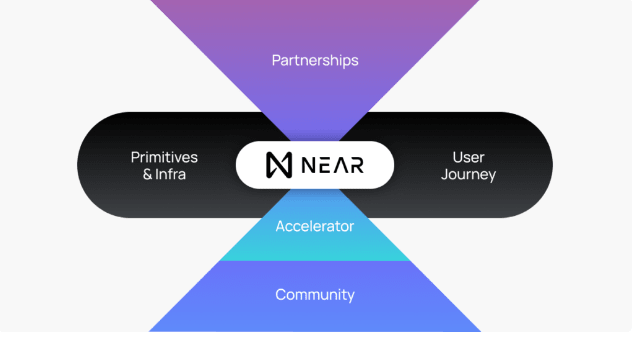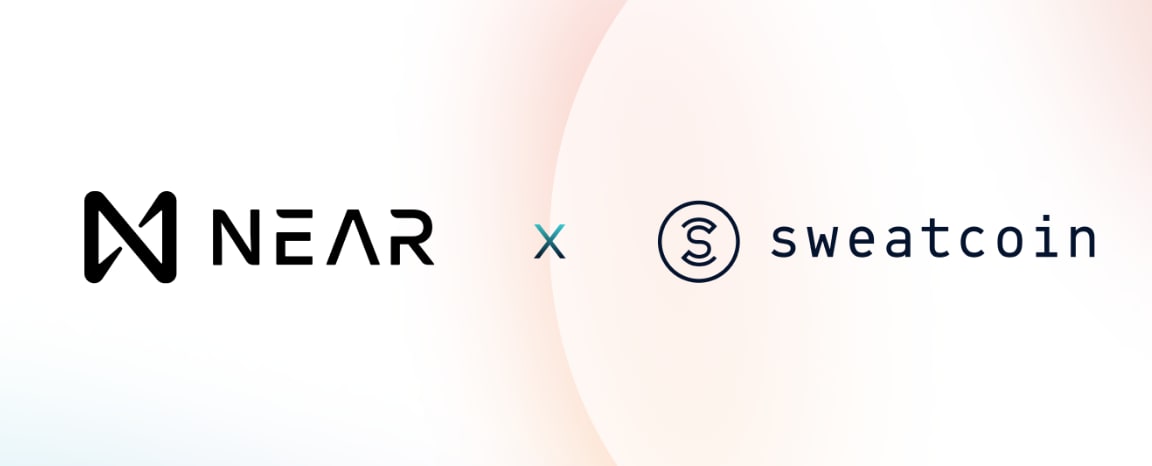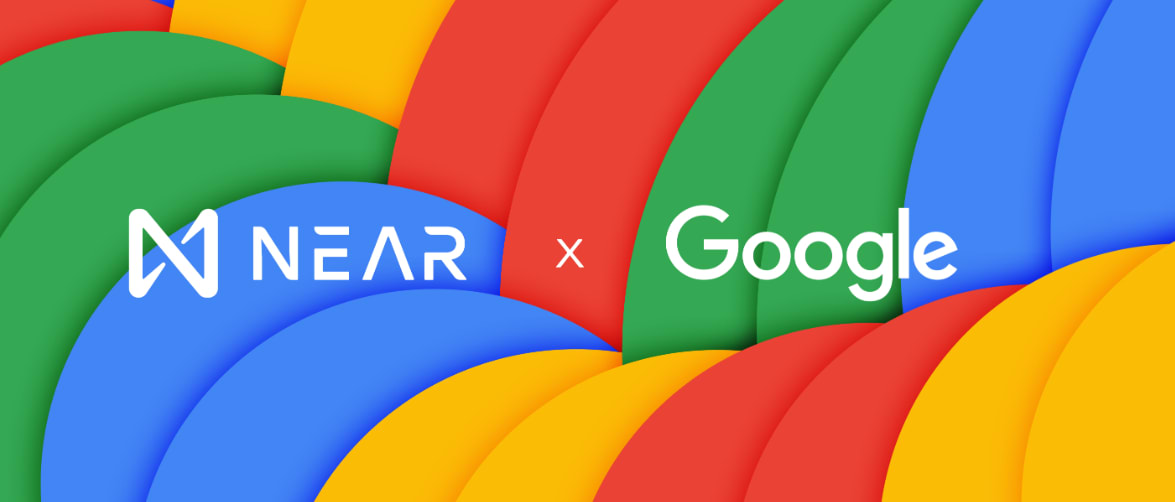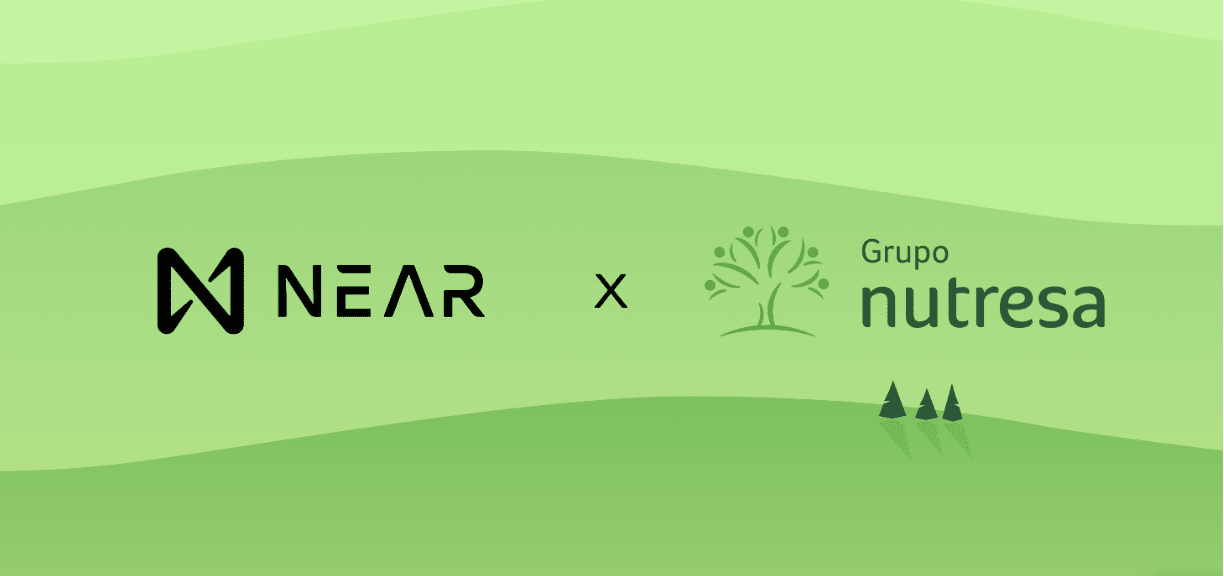NEAR New Grant Approach
All about Near's new strategic update and outlook for 2023
Overview
Web3 is changing the way we look at a number of everyday things, especially everything to do with the internet. It is growing rapidly, especially as it seems that the major Web2 platforms we use every day have become monopolies focused on profit, not people.
Although Web3 has not yet delivered on its promises, the NEAR Foundation believes that its protocol is the only one where the promises of Web3 can be fulfilled and where widespread adoption can occur 1.
NEAR Foundation's role is to support the NEAR ecosystem and community. This means that the Foundation can deploy capital to help promote growth, alongside its efforts to grow awareness of NEAR and onboard a billion users to Web3.
NEAR Foundation has already made significant steps to make NEAR's funding more transparent. Through the NEAR Digital Collective, it is empowering the community to evolve governance and coordinate together through the DAOs ecosystem 2.
If you want to know where Near Fundrise capital is going, please visit This page
Methodology
The main idea behind this analysis is to give an overview of the strategic approach behind Near with which new Grant Approaches are intended to be promoted.
The analysis will be divided in two main parts:
- The first one about how the strategic roadmap is going and its involvement on the Near Protocol activity.
- And the second one, about the current state of the ecosystem in terms of decentralization.
Looking at the power distribution of validators grouping them by ranges, we can see how over the past three months, the top 15 validators holdings reduced from almost 70% of total staked NEAR to around 67%.
Another important metric for decentralization is to take a view on the number of total amount staked versus the amount of validators that are holding the tokens. In this case, we can see how in a monthly basis, the amount of NEAR staked increased over the past 3 months. However, the situation is not similar fo the amount of active validators. In this case, it seems that the major amount of validators were registered on mid August.
Nakamoto coefficient
The first metric analyzed to measure the decentralization is the Nakamoto Coefficient, that represents how many validators are needed to accumulate more than 33% of the total current NEAR staked. As we can see, there is currently needed 8 validators holding 33% of the total staked balance.
In these charts above, we can see firstly the change in number of delegators on each chain, as well as the cumulative change over the past three months.
If we observe closely, we can see how the major of the days on Near have been negative over the past three months. In fact, if we take a look at the cumulative charts, we can observe how Near has lost almost 1k delegators over the past 3 months.
Blockchain validators
The blockchain validators are the most important sector of a blockchain governance. Validators are those dedicated to maintaining a blockchain's integrity. Validator nodes may store the full blockchain or an abbreviated version that is quicker to analyze so the best way to succeed is to have as many as good validators as possible helping the ecosystem.
Based on a Monthly basis, we can see how the amount of needed validators in Near increased to 8 showing an improvement on the Near decentralization. So, it seems that the current strategy is going well for Near development.
The Nakamoto Coefficient, that represents how many validators are needed to accumulate more than 33% of the total current NEAR staked. Based on a Monthly basis, we can see how the amount of needed validators in Near increased from 6 to 8 showing an improvement on the Near decentralization. Looking at the power distribution of validators grouping them by ranges, we can see how over the past three months, the top 15 validators holdings reduced from almost 70% of total staked NEAR to around 67%.
In terms of delegators, Near have been negative over the past three months. In fact, if we take a look at the cumulative charts, we can observe that Near has lost almost 1k delegators. In the final chart we have observed how the total staking is distributed among the top 15 validators, having at the top 3: Figment, AstroStakers and Meta.
Distribution of staked NEAR
The distribution of NEAR staked is also important to know how the NEAR are diversified accross validators. It is good to have a lot of validators but its better to have similar ones than one stronger than others. As more diversified is the governance capital, more validators will be need to halt the ecosystem.
If we take a look at the distribution of staking by validators, we can see how there are a top 3 validators holding more than 7.5% of total NEAR staked each. These validators are composed by Figment, AstroStakers and Meta.
In fact, we can corroborate again that the top 15 validatos hold more tan 60% of the total NEAR staked.
Strategic approach
The growth in the use of NEAR will start with a top-down approach focusing on partnerships. In principle, Near will consider each sector according to its hype on the market, starting with sports, entertainment and ending with loyalty. Notable partnerships in recent months include Grupo Nutresa, Google Cloud and Sweat Economy.
To see if this strategy is really working, I have conducted an analysis of these major partnerships to see if it is affecting both activity, attracting new users and capital power.

1. Sweat Economy partnership

Although the partnership was months before launch, in September 2022, Sweat Economy (Sweatcoin), successfully launched on NEAR with the largest ever delivery to active wallets. The Move-to-Earn platform, active on Web2 since 2016 with over 130 million global users of its Sweatcoin app, distributed its new Web3 SWEAT token to 13.5M token holders. The Sweat Wallet app quickly became the #1 most downloaded Finance app in over 50 countries 3.
To see what this mean for Near Protocol, I conducted a study of the impact on activity and staking.
Looking at the charts, it is clear that the partnership between Near Foundation and Sweat Economy was positive for the Near Protocol activity due to the activity spiked considerably reaching all time high of the main metrics.
As well, in terms of staking it seems that the strategic partnership lead users to enjoy the program and the amount active and new stakers also increased. However, the repercusion on the NEAR staked seems to have been so low.
- Google Cloud partnership

Another great partnership was with Google Cloud. In this case, the news came out last October. Since then, Google Cloud has been providing technical assistance to NEAR grant recipients. Google Cloud thus provides developers with important support as they build and scale their Web3 projects and dApps, i.e. with this partner, an infrastructure has been created for NEAR's Remote Procedure Call (RPC) node provider to Pagoda, NEAR's Web3 starter platform.
This allows developers to deploy code quickly, securely and seamlessly. Pagoda helps developers to easily and quickly launch dApps on NEAR through a library of pre-tested templates and auto-generated contract user interfaces 4.
What did it mean for the Near Protocol network?
In this case, it seems that the Google cloud strategic partnership was better for Near Protocol in case of staking economy, which is a good consequence because of it is good for the Near capital allocation.
The most important think is that not only the active users staking NEAR increased but also the staking actions as well as the volume being staked.
- Grupo Nutresa partnership

The other major partnership was with Grupo Nutresa, one of South America's largest food processors, to bring Web3 to the food sector, which took place last December. In this way, Near will enable Grupo Nutresa to build one of the first open source loyalty point programmes with the intention of bringing the masses into the NEAR and Web3 ecosystems 5.
So let's see how this has impacted on Near's performance.
Looking at the activity before and after the Nutresa Group partnership, we can see how in this case, it seems that the impacted was a week after the deal. While the activity was decaying during the previous month after the parntership, it seems that after the date, the bad trend finished and started a new uptrend, which was good for the protoco.
In terms of staking, the activity seems to have been similar for actions and users, but not for the volume staked. In this case, the volume seems to have entered on NEAR days before the partnership.
Current state of the Near Protocol Ecosystem
Blockchain Operating system approach
One of the next steps discussed by Near Protocol has been to design a blockchain operating system to improve the user experience on Web3 by connecting applications, tools, social, revenue and developer components across the open web.
Many of the core components of the blockchain operating system already exist in NEAR. One of the best known is NEARCrowd, a sharing economy platform that, according to the Near Foundation report, covers 50% of users making transactions every day.
But how common is NearCrowd in Near Protocol activity?
It is clear that Near Protocl has to consider similar strategies like the NearCrowd ones due to it seems that it is one of the ost common used dapp on Near ecosystem. In terms of users, even the percentage share decreased over time, it still represents more than 20% of the total Near transactions.
Something similar occurrs with the active users using the applications. In this case, the percentage is lower, but it represents also a good percentage.
Decentralization government
Blockchain decentralization can be understand as the wat to transfer control and decision-making from a centralized entity to a distributed network. In the major of the cases, the distributed network refers to validators who are building and helping to smart contracts succeed.
In this section, we are gonna evaluate if Near Ecosystem is being decentralized or not.
Development
Contracts are simply programs stored on a blockchain that run when predetermined conditions are met. They typically are used to automate the execution of an agreement so that all participants can be immediately certain of the outcome, without any intermediarys involvement or time loss.
In blockchain networks, the contracts are one of the most important things because of without them the network would not exists. For that, contracts are the main reason of a blockchain development. When more contracts are used, more large are the blockchain and then more growth could be expected.
In this section, we are gonna track the basic metrics regarding development of Near Ecosystem.
There are currently more than 17k contracts deployed on Near. It is clear that the major of them have been deployed during the firsts stages of Near Protocol.
Looking at the charts by type of contract, we can corroborate that the percentage of activity of new contracts (taking into account “New contracts” as contracts deployed one month before the transaction) has decreased over time. However, it is a logical pattern due to there are more old contracts as the time pass. But the important think is that the proportion of interactions seems to be reached the lowest number and now are stayed above 8%. Meaningly that the new contracts are important for Near users.
If we take a look at the chart regarding the deployed contracts per debut date and its share (taking into account the number of interactions over the first month after its deploy), we can see that it doesnt matter if a contract has been deployed in the early stages or no. So, Nearcrowd and Aurora are two of the top contracts on the early stages with more than 10M of interactions reached over the first month after its deploy. But the top 3 has been Sweatcoin, also awith more than 10M of interactions reaching a percentage share higher than 10.
Regarding the top contracts by interactions it can be seen how the same top three are presented.
Final conclusion and message to Near Foundation
After a dive deep analysis of Near Foundation steps and considering Near Protocol activity over time, we have seen how the major of the strategic approaches of Near Foundation have been successfully carried out and help the community to stay there and keep using the platform in a healthy way.
We have also seen how the previous top 3 strategic partnerships with Sweat Economy, Google Cloud and Grupo Nutresa have been positive for the evolution of the ecosystem activity and the development of Near, generating sometimes a major basic activity such as number of transactions, active and new users, etc., and sometimes generating a direct impact on the Near capital and its governance, improving the staking actions and staked capital. It is clear that Near Foundation needs to stay strong with this type of partnerships to continue leading the Web3 sector and keep community active and growing.
Another important think is the dominance of NearCrowd activity over the entire Near activity, representing more than 15% of transactions and almost 10% of the active users (until Sweatcoin wallets creation). Then, another good point to keep in mine is the improvement of the current Near platform with some other type of daaps like NearCrowd which are generating a lot of expectation to Near wallets. As mentioned before and in Near Foundation purposes, a good way to start this 2023 could be including native meta transactions, new bridges, new social capabilities, and so on.